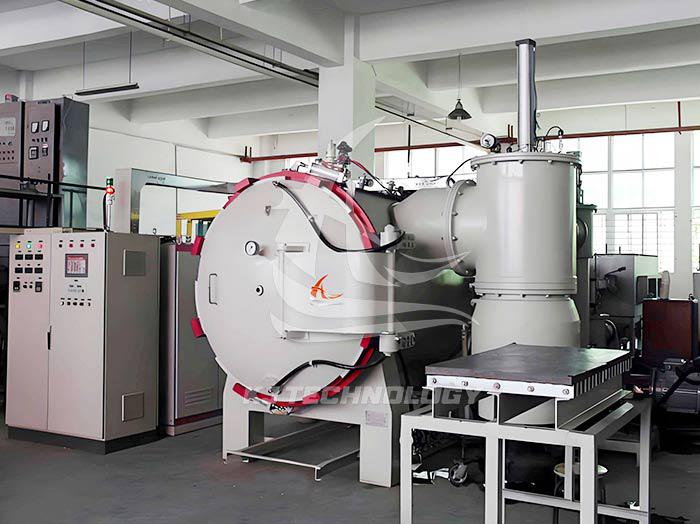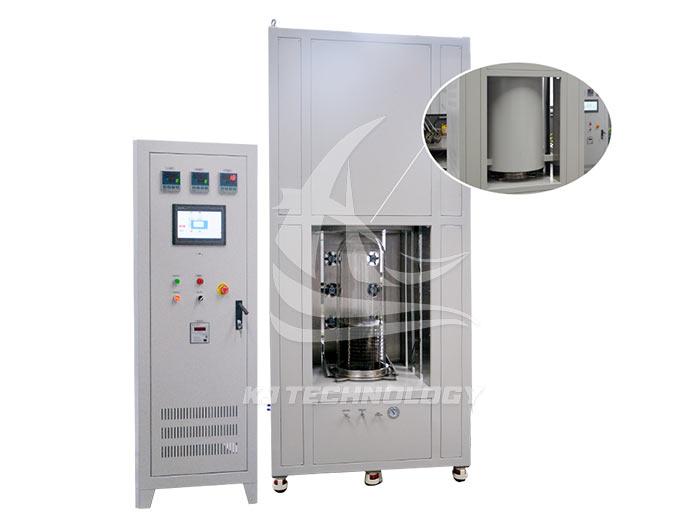Precautions for using metal heat treatment furnace
 08-12-2025 Author: KJ technology
08-12-2025 Author: KJ technology
Metal heat treatment furnace is the core equipment for optimizing the performance of metal materials, and its operation involves multiple complex links such as high temperature, atmosphere control, cooling, etc. A slight carelessness may lead to the scrapping of parts, equipment damage, and even safety accidents. The following are key precautions for the use of metal heat treatment furnaces, covering four aspects: safety, process control, equipment maintenance, and environmental protection:
1. Safety operation standards
high temperature protection
Operators must wear heat-resistant gloves, protective face shields, and thermal insulation clothing to avoid direct contact with the furnace body, heating elements, or freshly baked parts.
Surrounding the furnace: Set up warning signs and prohibit the stacking of flammable materials; When the furnace door is opened, a safe distance should be maintained to prevent thermal radiation burns.
Emergency stop: Familiarize yourself with the location of the emergency stop button, and immediately stop the machine and investigate the cause in case of temperature loss, abnormal atmosphere, or abnormal equipment noise.
Gas safety (involving controlled atmosphere furnaces)
Gas leakage detection: Before use, check whether the connections of methanol, ammonia, nitrogen and other gas pipelines are tight, and equip with combustible gas alarms.
Ventilation requirements: The furnace room needs to be forcibly ventilated to ensure that the gas concentration is below the lower explosive limit (such as methanol vapor concentration<2.5%).
Explosion proof measures: Explosion proof valves should be installed in controlled atmosphere furnaces to prevent explosions caused by sudden pressure increases inside the furnace.
Electrical safety
Grounding protection: Ensure reliable grounding of the furnace body and control cabinet to prevent electric leakage and shock.
Insulation inspection: Regularly check the insulation performance of heating elements and thermocouples to avoid short circuits and fire hazards.
High voltage operation: High voltage electric furnaces (such as vacuum furnaces) must be operated by professionals, and unauthorized personnel are prohibited from touching high-voltage components.
2. Key points of process control
temperature control
Calibration thermometer: Regularly calibrate the thermocouple inside the furnace with a standard thermometer to ensure that the temperature display error is ≤ ± 3 ℃.
Temperature uniformity:
Box type furnace: The placement of parts should leave gaps to avoid blocking the heating elements.
Well furnace: Long axis components need to be suspended vertically to prevent local overheating.
Continuous furnace: Control the speed of the conveyor belt to ensure consistent residence time of the parts in the heating zone.
Heating rate:
Quenching heating: Avoid rapid heating that may cause parts to crack (such as high carbon steel heating rate ≤ 50 ℃/h).
Tempering heating: The heating can be appropriately accelerated (such as 100 ℃/h), but temperature fluctuations of>± 5 ℃ should be avoided.
Atmosphere control (controllable atmosphere furnace)
Atmosphere components:
Quenching atmosphere: usually nitrogen+methanol cracking gas (carbon potential 0.3% -0.5%), to prevent oxidation and decarburization of parts.
Carbonization atmosphere: Control the carbon potential (0.8% -1.2%) by adjusting the flow rate of methane and propane.
Oxygen probe calibration: Regularly calibrate the oxygen probe with a standard sample block to ensure accurate carbon potential measurement.
Atmosphere flow rate: Adjust the gas flow rate according to the furnace volume and number of parts to avoid local oxygen deficiency or peroxide.
cooling control
Quenching and cooling:
Oil quenching: Control the oil temperature (60-80 ℃) to avoid parts cracking; Regularly replace quenching oil to prevent aging.
Water quenching: Add polymer quenching agent and adjust the cooling rate (such as reducing from 100 ℃/s to 50 ℃/s).
Graded quenching: First air cool to below the Ms point (such as 300 ℃), then slowly cool in a salt bath furnace to reduce deformation.
Tempering cooling:
Low temperature tempering (<250 ℃): can be air-cooled or cooled with the furnace.
High temperature tempering (>500 ℃): Rapid cooling (such as air cooling) is required to avoid the second type of tempering brittleness.
3. Equipment maintenance and upkeep
Daily inspection
Sealing of furnace body: Check whether there is any air leakage at the furnace door, observation window, and gas pipeline connection.
Heating element: Observe whether the resistance wire and silicon carbide rod turn red evenly, and replace them in a timely manner if they break or age.
Cooling system: Check whether the pressure and flow of the water cooler and oil cooler are normal to prevent blockage or leakage.
Regular maintenance
Furnace cleaning: Clean the oxide scale and carbon black after each batch of processing to avoid affecting temperature uniformity.
Refractory material inspection: Check the furnace lining and bottom plate for cracks or deformations every six months, and promptly repair or replace them.
Lubrication of transmission components: The conveyor belt and chain of the continuous furnace need to be regularly lubricated with high-temperature resistant grease.
Calibration and Calibration
Temperature controller: sent to the metrology department for calibration every year to ensure temperature control accuracy.
Atmosphere analyzer: calibrated with standard gas every quarter to ensure accurate measurement of carbon potential and oxygen content.
Pressure gauges and flow meters: Regularly calibrate to avoid reading deviations that may cause process loss of control.
4. Environmental protection and energy-saving measures
waste gas treatment
Controllable atmosphere furnace: Install tail gas combustion device to completely burn unreacted methanol and ammonia, reducing VOCs emissions.
Quenching oil mist: Install an oil mist collector to prevent oil mist from spreading and polluting the environment.
Energy saving optimization
Waste heat recovery: Utilizing the waste heat of the furnace body to preheat workpieces or heat quenching oil, reducing energy consumption.
Upgrade of insulation materials: Replace traditional asbestos with nano microporous insulation felt to reduce heat loss.
Intelligent control: Adopting PID temperature controller, the heating power is automatically adjusted according to the temperature inside the furnace to avoid overburning.








